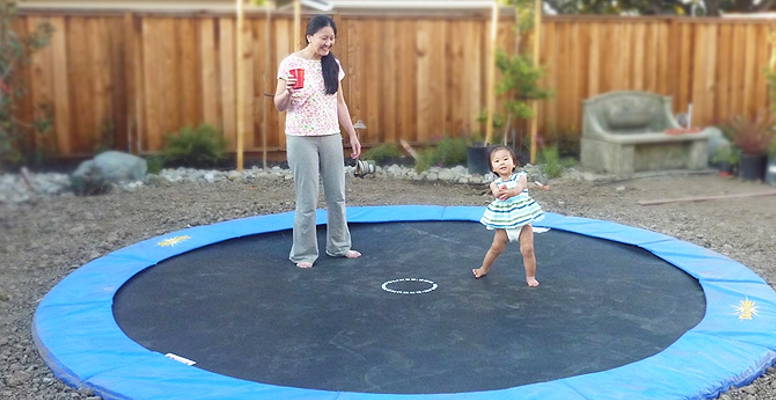
A lot of property owners are choosing to go with in-ground trampolines. In-ground pools have been around for many years, and tramps are starting to catch up. It means that there are a lot of details people need to know before they go out and get their own in-ground installation. The most important part is: Are these things safe for children?
What are in-ground tramps?
There’s only one big difference between in-ground and above-ground models. They have both the same style of jumping mat, the same frame, and the same springs. They also require the same precautions and rules. One significant difference between the two is that in-ground facilities are placed in the ground. Property owners will lower its location, making it easier to use and a lot safer.
To find out more about how to bury these things for safety, click on this site for details.
How safe are these installations?
It goes without saying that these things are a lot safer compared to their above ground cousins. Listed below are some safety differences:
It is easier to keep dry and protect
High winds cannot damage these installations.
Pets and children cannot hurt themselves getting on the device.
Pets cannot go underneath it.
It is closer to the ground (literally ground level)
Are these things safe compared to above-ground facilities?
While in-ground tramps are a lot safer than their counterparts, there are still safety precautions that need to be followed to make sure kids don’t get hurt, at the same time, still have tons of fun. If the kids don’t follow these rules, then some risks do come with these trampolines. Here are some of the rules:
Make sure that there is one person at any given time with the device.
Walk and not jump on it from any side.
Do not use the device while under the influence of alcohol.
Do not use it as an access point to another surface.
Remove anything sharp from pockets and take off the glasses.
Stay within the device’s required weight limit.
Always get clearance from doctors if they already have health problems.
Limit the bounces and tricks children do on the tramps
For more safety tips, click https://safety.lovetoknow.com/household-safety-tips/tips-trampoline-safety for more details.
The safest in-ground installations
There are a lot of quality devices made of safety-conscious brands. Which one is the safest is up to the users. But the safest devices are the ones whose users follow these three safety precautions:
Remove every jewelry in your body – it includes rings, chains, watches, or anything that can get snagged.
Locate the facility in safe areas – parents don’t want power lines overhead, eaves, overhanging tree branches, or gutters. Not only that, always keep the facility far enough from fences and buildings.
Always use safety tools and equipment – the springs on these things hurt just as much as springs on above-ground tramps, same with falls and other accidents. That is why it is best to use spring nets, pads, and other accessories to make sure that users will have tons of fun without any injuries. As an honorable mention, don’t use slippery footwear like street shoes on the trampoline. If users need to wear socks and shoes, make sure that they are not slippery.
Use safety nets
While these things are closer to the ground, kids can still get hurt if they land off the device. The surface around the tramp is as hard as the surface around the above-ground ones. The net needs to be attached to the facility much the same as it does in other devices.
The key to using nets is to make sure that users get the required diameter size. Parents also need to make sure that the net will hold up when used regularly. These nets prevent injuries by ensuring that the kids enter or exit sunken trampolines safely and adequately. It also prevents unauthorized use of the tramp when the parents are not around.
Safety pads
Safety pads are a must-have if parents are going to install these tramps in their back yard. These pads perform various safety precautions at the same time:
Users are well protected from springs. Landing on those can be very painful.
It provides proper ventilation so that the device bounces appropriately. It protects the users as well as the facility.
The surface temp is reduced to its required temperature during hot weather.
It helps protect the springs from damaging air movements as users bounce.

